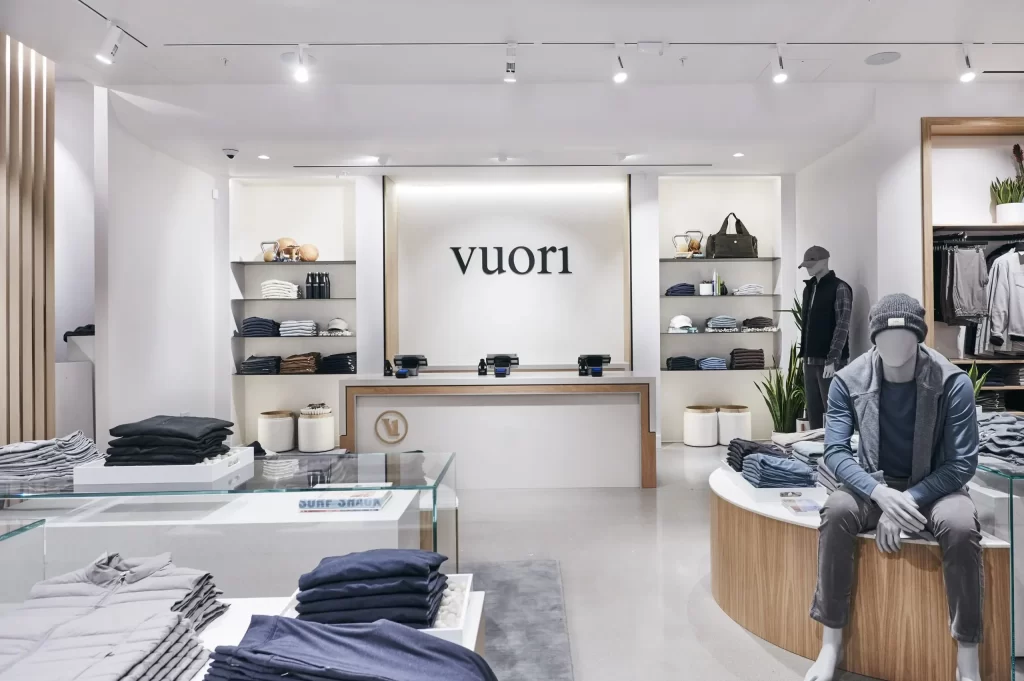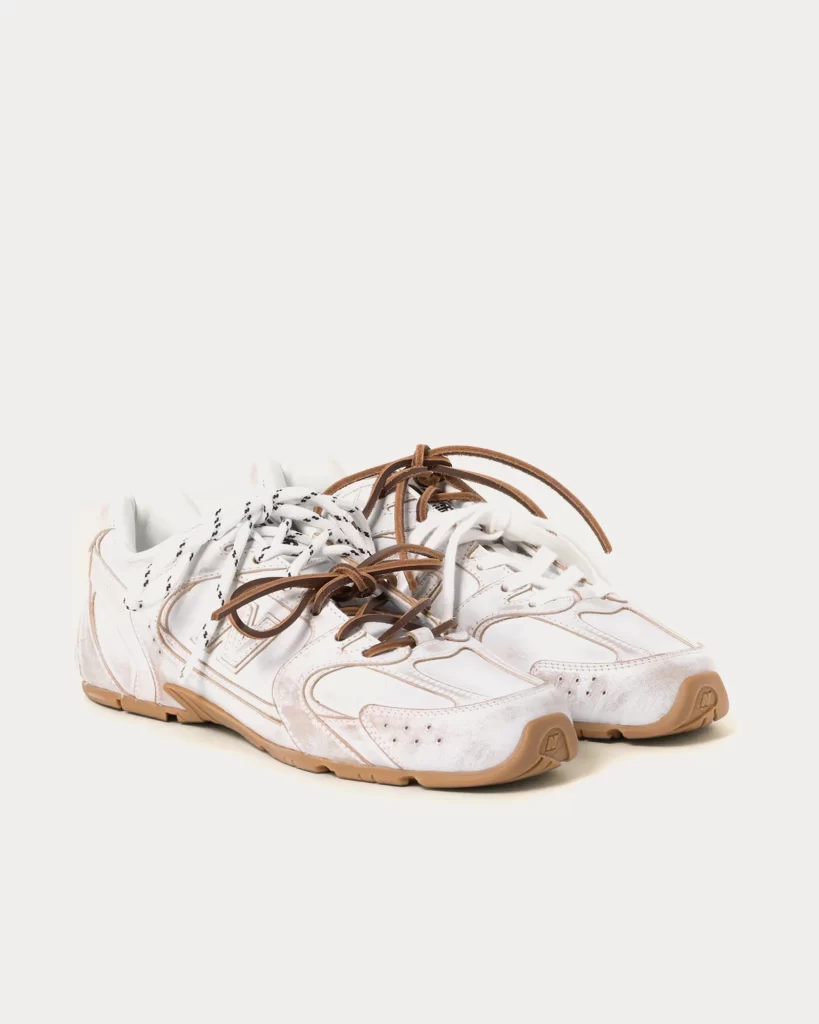Headlines about Adidas’ struggles in China, Nike CEO John Donahoe’s resignation in October 2024, and a decade-low drop in Nike’s revenues might suggest that the sportswear industry is in decline. However, these challenges don’t paint the full picture. Erwan Rambourg, global head of consumer and retail research at HSBC, points to a brighter outlook for some companies, driven by inventory corrections and refined promotional strategies. ‘There’s a tendency to see Nike’s performance as a proxy for the sector,’ Rambourg explains, highlighting healthier trends across the broader market.
A Tale of Two Markets: Veterans vs. Challengers
The current landscape of sportswear can be seen as a divide between industry veterans and rising challengers. On one side, Nike and Adidas are navigating uneven recoveries; on the other, emerging brands are rapidly gaining market share in categories like technical footwear and performance apparel. Brands such as On, Hoka, and Salomon are thriving. This shift is evident in key shopping districts like Madison Avenue in New York and Regent Street in London, where spaces once occupied by fashion labels now feature brands like Californian Vuori and Alo, or Canada’s Arc’teryx. Boutique gyms have similarly embraced sleek, logo-free gear and Salomon’s XT-6 trainers over traditional Nike and Adidas staples.
Emerging Players Redefining the Market
McKinsey & Company projects a 7% annual growth for the global sportswear market through 2027, signaling more opportunities for established players and emerging brands alike. “It’s been an extraordinary year for growth,” shares Joe Kudla, founder and CEO of Vuori, known for its comfortable sweatpants and matching workout sets. Vuori, launched a decade ago from Kudla’s garage, recently secured $825m (€779m) in funding and reached a valuation of $5.5bn (€5.2bn). This success highlights the growing demand for versatile, high-quality athleisure wear that seamlessly bridges performance and lifestyle.
In comparison, Nike remains a dominant force with a valuation exceeding $114bn (€107bn), more than double Adidas’. However, Vuori’s rapid ascent underscores the shifting dynamics in the industry, where smaller, agile brands are carving out substantial market share by responding to evolving consumer preferences for comfort, sustainability, and functionality.
The Rise of Athleisure and Market Growth
Kudla celebrated the opening of Vuori’s first flagship store outside the US on London’s Regent Street, marking a significant milestone for the brand’s global expansion. With plans for 100 US stores by 2026 and 50 international locations over the next five years, Vuori is positioning itself as a key player in the athleisure market. Initially launched as a men’s brand, Kudla’s inspiration stemmed from his yoga practice and the limited availability of versatile, high-quality workout apparel that could transition seamlessly to everyday wear. This gap in the market motivated him to create clothing that combined performance with style.

In 2018, Vuori expanded its offerings to include womenswear, a move that has proven pivotal to its growth. Today, womenswear accounts for half of the brand’s sales, highlighting its broad appeal and success in capturing a diverse customer base. “Big brands dominated the category with synthetic materials and bright logos,” Kudla recalls. “We wanted something aligned with living life beyond sport.” This philosophy of merging functionality with lifestyle continues to define Vuori’s ethos and resonate with consumers seeking quality and simplicity.
While Vuori’s rise has disrupted the dominance of legacy brands like Nike and Lululemon, Kudla insists that his brand’s success is independent of their struggles. Instead, he attributes Vuori’s growth to its ability to meet evolving consumer preferences for versatile and sustainable activewear. The global athleisure market, forecast to grow at a compound annual rate of 9.3% and reach $663bn (€626bn) by 2030 according to Grand View Research, offers ample room for both new entrants and established players to thrive. With its expanding footprint and strong brand identity, Vuori is well-positioned to capitalize on this momentum.
Risks for Legacy Brands
However, the rise of upstarts like Vuori and Alo presents risks for established brands. Nike, for instance, slashed its fiscal outlook last December, predicting just 1% sales growth, as outdated product launches and overexposed designs forced an overhaul. CEO Elliot Hill, who returned in 2024, faces the challenge of rebuilding Nike’s wholesale network, launching innovative products, and revitalizing its image. “Nike’s problems are solvable, and Hill is the right person to tackle them,” says Matt Powell, a sporting goods expert advising BCE Consulting. “But these aren’t quick fixes. While progress may begin by 2025, a full turnaround could take longer.” Nike’s product pipeline isn’t expected to recover until mid-2026. Adidas also faces hurdles, particularly with oversaturated styles like the Samba, which require careful management.
Innovation Through Collaboration
Conversely, upstarts excel by targeting untapped niches and building relationships with retailers. Asics’ collaborations with fashion-forward brands like Cecilie Bahnsen and Kiko Kostadinov illustrate how partnerships can drive demand while staying true to brand identity. When executed effectively, these collaborations benefit both sides: niche brands gain access to new categories and advanced technical supply chains, while sportswear players gain fresh creative direction. Unlike the fleeting, trend-driven partnerships of the past, these collaborations align more closely with the brands’ identities, driving sustained demand.


Salomon, owned by Amer Sports, is also leveraging its fashion-forward approach. Collaborations with Comme des Garçons and MM6 Maison Margiela have bolstered its fastest-growing Sportstyle category, which includes the XT-6. Similarly, New Balance has revitalized its archive designs through partnerships with Aimé Leon Dore while keeping commercial styles readily available to meet trickle-down demand. New Balance has also been working with the likes of Miu Miu on a series of sell-out redesigns of its 530 and 574 sneakers, as well as Japan’s Junya Watanabe, with which it teased a trainer-loafer hybrid at Paris Fashion Week in January 2024.
The Impact of Global Events
Looking ahead, high-profile events like the 2024 Olympics and Euros highlight sport’s enduring appeal, drawing global audiences and reinforcing the cultural significance of athletics. Luxury brands are capitalizing on this momentum, with LVMH investing €150m in the Olympics and extending its Formula 1 partnership to secure visibility and align with premium sporting narratives. Interest in women’s sports is also surging, with growing viewership and sponsorship opportunities driving further momentum. This shift reflects broader changes in the sports ecosystem, as diverse audiences and evolving consumer values continue to shape the future of the industry.
Future Opportunities and Competition
Despite holding a quarter of the global market, Nike and Adidas face an increasingly fragmented landscape. “Legacy players’ dominance is fading, while brands like On and Hoka have significant growth potential if they crack categories like apparel,” observes Powell. As the market evolves, this fragmentation is not a weakness but a sign of vitality. “The big trees in the forest are shedding leaves, letting sunlight reach new growth,” Powell concludes, emphasizing that greater competition drives innovation, fosters diversity, and ultimately strengthens the industry as a whole. The future of sportswear will be shaped by both the resilience of established giants and the bold strategies of agile newcomers.







